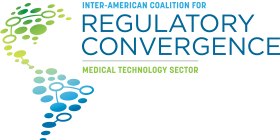Good Regulatory Design (GRP / Regulatory Coherence) Policy Guide and Implementation Manual
Global Regulatory Cooperation Center
This guide provides a landscape of international Good Regulatory Practice (GRP) policies and definitions and implementation checklist for senior policy-makers. GRP, also known as Regulatory Coherence”, “Good Regulatory Design” or “Regulatory Reform”, is a horizontal, whole-of-government policy, managed at the top executive level of government, implementing the binding rules by which regulatory agencies generate regulations. GRP is the minimum set of policies that governments adopt horizontally across all of its agencies to ensure that the entire public administration of a country implements rulemaking in a consistent manner. A foundational GRP policy allows sector-specific Regulatory Convergence efforts, including international standards harmonization, to reach their full potential.
Contents include:
The guide is available in English / Spanish / Portuguese
Good Regulatory Practices
Organization for Economic Co-operation and Development
World Trade Organization
The World Trade Organization – Technical Barriers to Trade Agreement constitutes the international law and binding legal obligation that each member country use international standards as a basis for national technical regulations, that technical regulations not be more trade restrictive than necessary, and that outdated technical regulations be updated or withdrawn.
Technical Regulations and Standards
Article 2: Preparation, Adoption and Application of Technical Regulations by Central Government Bodies
2.2 Members shall ensure that technical regulations are not prepared, adopted or applied with a view to or with the effect of creating unnecessary obstacles to international trade. For this purpose, technical regulations shall not be more trade-restrictive than necessary to fulfil a legitimate objective, taking account of the risks non-fulfilment would create…
2.3 Technical regulations shall not be maintained if the circumstances or objectives giving rise to their adoption no longer exist or if the changed circumstances or objectives can be addressed in a less trade-restrictive manner.
2.4 Where technical regulations are required and relevant international standards exist or their completion is imminent, Members shall use them, or the relevant parts of them, as a basis for their technical regulations…
The WTO Committee on Technical Barriers to Trade adopted a set of principles to which an organization engaged in the development of international standards must comply. These principles have been captured in document “G/TBT/ 1/REV. 8. Section IX,” titled Decision of the Committee on Principles for the Development of International Standards, Guides and Recommendations with Relation to Articles 2, 5 and Annex 3 of the Agreement.














